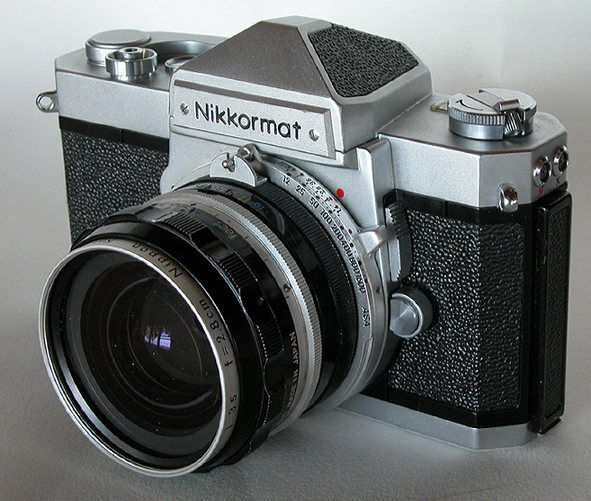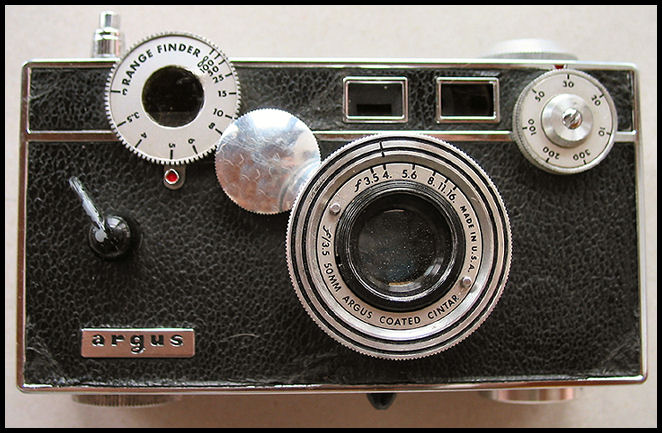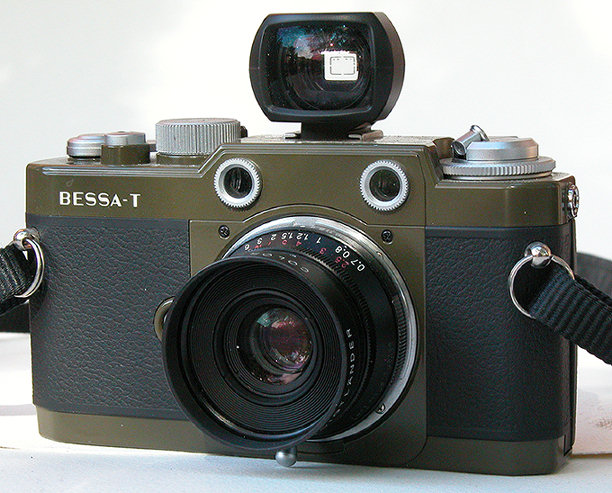Time to take a look at some of my old camera collection.

Nikkormat SLRs were simpler, more affordable alternatives to Nikon’s professional level Nikon F and F2 SLRs. The Nikkormat FTn was manufactured from 1967 to 1975.

The Argus C3 was a low-priced rangefinder camera mass-produced from 1939 to 1966 by Argus in Ann Arbor, Michigan, USA. The camera sold about 2 million units, making it one of the most popular cameras in history. Due to its shape, size, and weight, it is commonly referred to as “The Brick” by photographers (in Japan its nickname translates as “The Lunchbox“). The most famous 20th-century photographer who used it wasTony Vaccaro, who employed this model during World War II.

The first model was the Bessa L, introduced in 1999. This was a finderless body with a Leica screw mount. It was introduced with a range of Voigtländer 39mm screw lenses that were quite inexpensive and said to be of excellent quality. It could of course mount all the wide variety of 39mm screw lenses by manufacturers as diverse as Leica, Canon, Nikon and even cheaper but often excellent Soviet lenses.
The Bessa L was mostly intended to be used with ultra wide angle lenses, with which the absence of a focusing device is not a problem. Most notably Voigtländer introduced a 15mm and a 12mm lens, the latter being the widest rectilinear lens ever marketed.
The Bessa L has TTL metering with LED readout on the back edge of the top plate with an ASA range of 25–1600 and an EV range 1 to 19 at ASA 100. The readout consists of two red arrows pointing to a green light in between that enables use of the camera as, effectively, a shutter priority, aperture priority, or totally manual camera.
On some markets, the Voigtländer Bessa L was sold as the Cosina SW-107.
The Bessa L was supplemented in 2001 by the Bessa T, which used the Leica M-mount, could receive a trigger advance design, and had an integrated rangefinder with high magnification, but no viewfinder. It was sold in silver or black; from 2002, also in gray or olive (at a higher price and perhaps only in Japan). It is now discontinued but some stock is still available.
In 2001, the Bessa T was sold in a special kit, called 101st Anniversary (in short “T101”), with a 50mm f:3.5 collapsible Heliar lens, for the anniversary of the Voigtländer Heliar lens design. It existed in black, grey, olive and blue: five hundred numbered examples were produced for each color.












